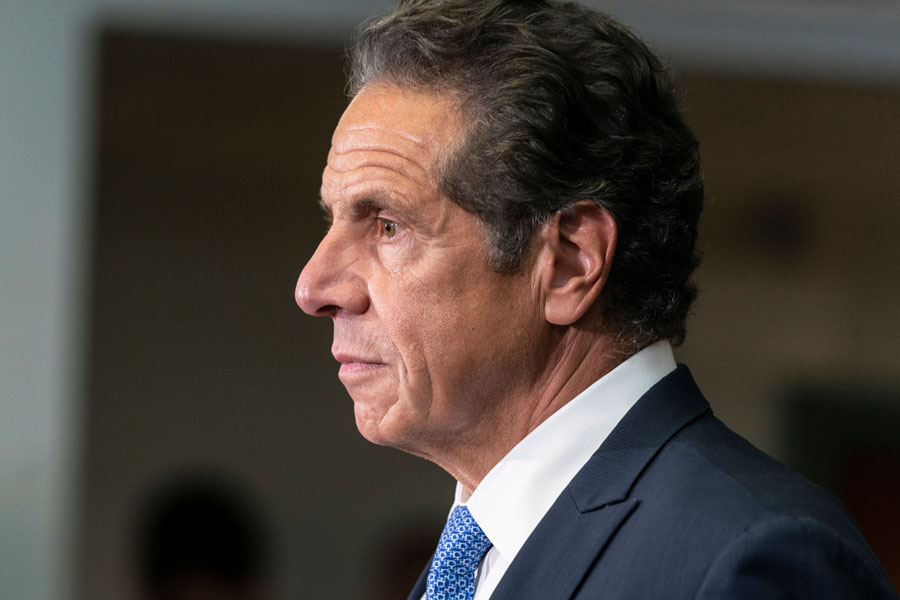
ALBANY, NY – A once-celebrated infrastructure project launched during the Cuomo administration has quietly ended in embarrassment, after New York state officials confirmed that more than $100 million worth of unused bridge lighting equipment was auctioned off this summer for a mere fraction of its original cost.
The initiative, known as the “Harbor of Lights” project, was originally touted by then-Governor Andrew Cuomo as a plan to dramatically illuminate key bridges and tunnels throughout the New York City metropolitan area. Announced in 2017 as part of Cuomo’s broader infrastructure vision, the project aimed to install high-end LED lighting on major crossings including the RFK Bridge, Queens Midtown Tunnel, and others.
However, despite the state’s utility authority spending over $100 million on lighting equipment, installation never began. Instead, thousands of lighting components were boxed up and placed in storage – where they remained for nearly seven years.
Records show that the New York Power Authority (NYPA), which oversaw the procurement and storage of the equipment, spent an additional $2.1 million in taxpayer and utility funds just to warehouse the materials between 2017 and 2024. Yearly storage costs reportedly ran close to $300,000.
With no installation ever scheduled, NYPA quietly placed the lighting gear up for auction in June 2025. According to officials, the sale recouped only $383,000, less than half of one percent of what the state originally spent.
Critics have slammed the project as a glaring example of wasteful government spending and a failed vanity project. Former Cuomo administration officials defended the effort in earlier years, calling it part of a broader push to modernize and beautify New York’s infrastructure. But the lighting project was ultimately sidelined during political shifts, pandemic-era budget tightening, and shifting transportation priorities.
The lighting plan also drew attention during the 2017 “Summer of Hell,” when Cuomo’s administration prioritized aesthetic upgrades to city crossings while subways and rail systems suffered from chronic delays and safety issues.
Auction documents reviewed by reporters showed some lots of lighting equipment starting as low as $25, despite having been originally engineered for public infrastructure use. The buyers were not immediately disclosed.
As of now, no future use for the lights or the remaining equipment has been announced. State officials have not committed to any follow-up investigation into how the project unraveled or how decision-making broke down between the Cuomo administration, NYPA, and the MTA.
The fallout adds to a growing list of former Cuomo initiatives that have been abandoned or scaled back under current leadership. Critics say it’s a reminder of the long-term cost of high-visibility projects that lack practical implementation plans – both in taxpayer dollars and in lost public trust.
Top Questions About New York’s $100 Million Bridge Lighting Project Collapse
What was the Harbor of Lights project?
The Harbor of Lights was a Cuomo-era initiative announced in 2017 to install high-tech LED lighting systems on major New York City bridges and tunnels. The goal was to create visually striking light displays on key crossings like the RFK Bridge and Queens Midtown Tunnel as part of a larger infrastructure beautification plan.
How much did the project cost taxpayers?
More than $100 million was spent on the purchase and planning of the lighting equipment. An additional $2.1 million was spent over seven years to store the equipment in warehouses after it went unused.
Was any of the lighting equipment ever installed?
No. Despite the large investment, none of the lighting systems were ever installed on any bridges or tunnels. The equipment remained in storage from approximately 2017 to 2024.
Why wasn’t the lighting ever installed?
The project lost momentum following leadership changes, budget constraints, and shifting priorities, especially after the COVID-19 pandemic. It was eventually shelved with no official announcement or plan to resume.
What happened to the equipment?
In June 2025, the New York Power Authority (NYPA) auctioned off the unused lighting components. The auction raised only $383,000, a tiny fraction of the original cost.
Who paid for the project and its storage?
The project was funded through the NYPA, which is a publicly owned utility. That means the costs were ultimately borne by ratepayers and taxpayers in New York State.
What types of equipment were auctioned?
Thousands of specialized lighting components designed for bridge installation were sold, including LED panels and system hardware. Some auction lots reportedly started at just $25.
Has anyone been held accountable for the spending?
As of now, no individuals or agencies have been formally held accountable. There has been no official investigation or audit announced into how the project was managed or why it failed.
Was the project part of a larger pattern of overspending?
Yes. Critics say this is just one example of former Governor Andrew Cuomo’s prioritization of aesthetic or “legacy” infrastructure projects, many of which came under scrutiny for high costs and minimal return. Similar concerns were raised about tunnel retiling projects and unused airport upgrades.
What’s the reaction from current state officials?
Most current officials have avoided direct comment. However, the auction and financial loss have sparked renewed calls for better oversight of state-funded infrastructure projects, especially those started under previous administrations.


